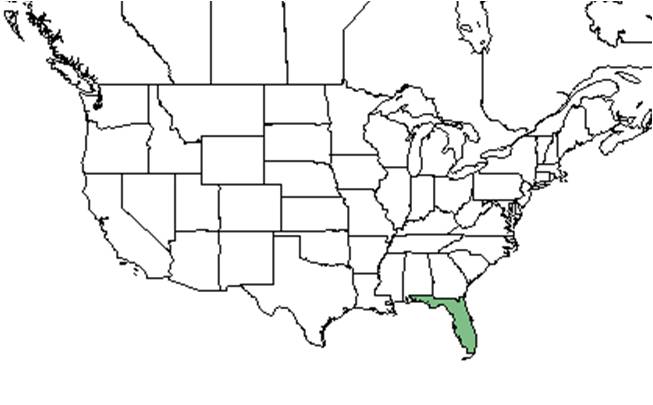Difference between revisions of "Quercus inopina"
KatieMccoy (talk | contribs) (→Distribution) |
KatieMccoy (talk | contribs) |
||
| Line 32: | Line 32: | ||
===Phenology=== <!--Timing off flowering, fruiting, seed dispersal, and environmental triggers. Cite PanFlora website if appropriate: http://www.gilnelson.com/PanFlora/ --> | ===Phenology=== <!--Timing off flowering, fruiting, seed dispersal, and environmental triggers. Cite PanFlora website if appropriate: http://www.gilnelson.com/PanFlora/ --> | ||
| + | It has been observed flowering in April and fruiting in August (FSU Herbarium). | ||
| + | |||
===Seed dispersal=== | ===Seed dispersal=== | ||
===Seed bank and germination=== | ===Seed bank and germination=== | ||
Revision as of 10:12, 18 November 2015
| Quercus inopina | |
|---|---|

| |
| Scientific classification | |
| Kingdom: | Plantae |
| Division: | Magnoliophyta - Flowering plants |
| Class: | Magnoliopsida – Dicotyledons |
| Order: | Fagales |
| Family: | Fagaceae |
| Genus: | Quercus |
| Species: | Q. inopina |
| Binomial name | |
| Quercus inopina Ashe | |

| |
| Natural range of Quercus inopina from USDA NRCS Plants Database. | |
Common name: sandhill oak
Contents
Taxonomic notes
Description
A description of Quercus inopina is provided in The Flora of North America.
Distribution
The Lake Wales Ridge is the natural range for Q. inopina, however it has been documented in Baldwin County, Alabama (FSU Herbarium).
Ecology
Habitat
In the Coastal Plain, Quercus inopina can occur in sand pine-evergreen scrubs, dry slash pine flatwoods, and longleaf pine/scrub oak communities (FSU Herbarium). Associated species include Quercus chapmanii, Q. geminata, Q. myrtifolia, Fraxinus floridana, Ilex arenicola, and Persea humilis (FSU Herbarium). It has observed to grow in dry environments (FSU Herbarium).
Phenology
It has been observed flowering in April and fruiting in August (FSU Herbarium).
Seed dispersal
Seed bank and germination
Fire ecology
Pollination
The following Hymenoptera families and species were observed visiting flowers of Quercus inopina at Archbold Biological Station (Deyrup 2015):
Apidae: Apis mellifera, Bombus impatiens
Colletidae: Colletes brimleyi
Use by animals
Diseases and parasites
Conservation and Management
Cultivation and restoration
Photo Gallery
References and notes
Deyrup, M.A. and N.D. 2015. Database of observations of Hymenoptera visitations to flowers of plants on Archbold Biological Station, Florida, USA.